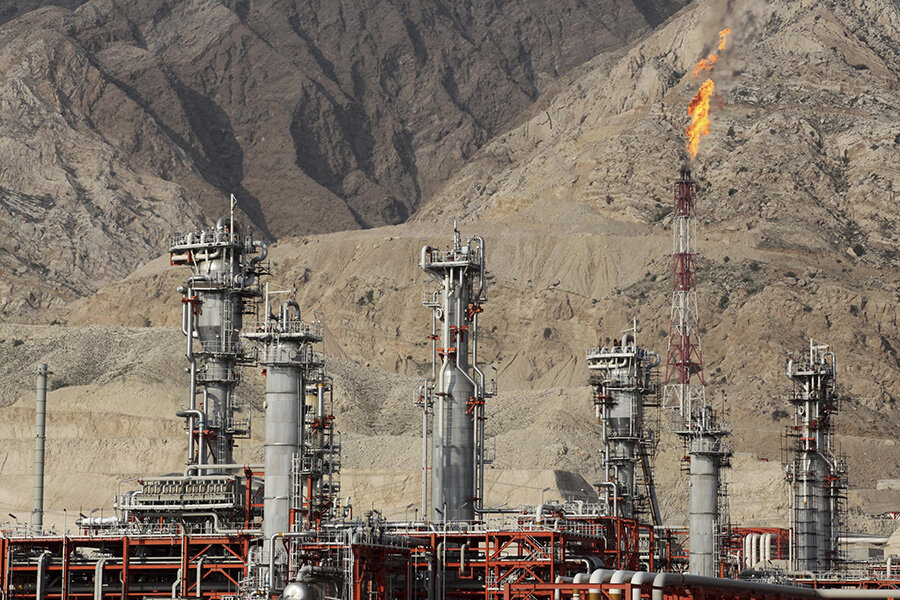Iran nuclear deal: what it means for natural gas
Loading...
The historic deal between Iran and the P5+1 group (The U.S., France, UK, Russia, China and Germany) has several oil majors and oil refiners considering the impacts of new Iranian crude hitting the global oil market.
“As soon as Iranian oil becomes available, we will certainly start buying again. Motor Oil was always very fond of Iranian crude,” said Loukas Tripelopoulos of Motor Oil Hellas SA. The removal of international sanctions would be a game changer for the Islamic Republic, which has one of the world’s highest crude oil reserves.
Estimates vary, but Iran could pump somewhere between 400,000 and 600,000 barrels per day over the next year or so, which will enter a market that is already oversupplied by around 2.6 million barrels a day.
However, it is not just the oil that the Iranians can offer; the country has the second biggest natural gas reserves in the world.
Could Iran become a major gas exporter in the near future?
Much like its oil sector, Iran’s natural gas industry has been adversely affected by the U.S. and European-led sanctions that have restricted the flow of foreign direct investment and the transfer of technology. (Related: This Is Why Oil Markets Shouldn’t Worry About Iran’s Comeback)
Going by a recent report from Fitch, Iran has close to 34 trillion cubic meters of natural gas reserves, which is around 18 percent of the total global natural gas reserves. This means that Iran definitely has the potential to become a major player in the natural gas market once the sanctions are lifted. It is interesting to note that, in spite of the western sanctions, Iran’s natural gas production grew in 2014 as another phase of its largest natural gas field, the South Pars, came online.
Does Iran have the necessary infrastructure to meet the growing demand for its gas?
Although Iran has one of the highest global natural gas reserves, it contributes merely 1 percent to the total global natural gas trade with almost 90 percent of its natural gas exports going to Turkey, while the remainder goes to Armenia and Azerbaijan.
Iran is at a strategic location where it can benefit from the growing natural gas demand from Asian countries like India, China and Pakistan. It is therefore planning a number of gas pipelines once the sanctions are lifted. (Related: PEC, Get Ready For The Second U.S. Oil Boom)
One possible outcome of the deal is the potential for Iran to play an important role in the EU’s future energy security, as it could potentially join the 16 bcm Trans Anatolian Pipeline (TANAP) that would run from Azerbaijan through Turkey and Greece before connecting with the Trans Adriatic Pipeline (TAP). That could allow Iran to export natural gas to Western Europe. (Related: Historic Deal With Iran Opens Up Oil Industry)
TANAP is projected to start delivering natural gas in 2020, and Iran could use this pipeline network for gas exports, although it will require the construction of infrastructure, such as gas compression stations. The necessary buildout in infrastructure could mean that Iran doesn’t export gas to Europe for another decade
Could Iran set up cost efficient LNG production?
A recent study made by Carbon Tracker Initiative (CTI) found that the energy industry’s expectation from LNG has been a bit unrealistic up to this point. The study revealed that there could be LNG assets worth $283 billion that might not be needed over the next decade.
It stated that the majority of LNG projects that would survive were the ones that have already been built or are under construction and there would be little opportunity for greenfield LNG projects. When we look at Iran, we find that the state-owned National Iranian Oil Company (NIOC) had started working on an LNG plant, but its work was halted due to lack of financing and failure to purchase necessary foreign technology due to international sanctions. The possibility of Iran setting up cost effective LNG production looks bleak as of now.
“Iran could become a large gas exporter by the end of this decade at the earliest. Developing LNG capabilities is more costly and would probably take longer, and we do not expect Iran to export large volumes of LNG before mid-2020s,” said Fitch.
Conclusion
Nevertheless, Iran has some of the largest natural gas reserves in the world. Infrastructure constraints present an enormous obstacle to large-scale exports, but those could be overcome with enough investment. India and Pakistan present the most promising market for gas exports in the medium term, but even Europe is not out of reach in the longer-term.
With a historic nuclear deal in hand, Iran might just change the dynamics of the global oil and gas sector in the coming decade.
By Gaurav Agnihotri for Oilprice.com
More Top Reads From Oilprice.com:
- More Job Losses Coming to U.S. Shale
- The Emerging Megatrend Coming To Oil & Gas
- Mexico’s First Offshore Auction A Major Disappointment
Original article: http://oilprice.com/Energy/Crude-Oil/What-The-Iran-Deal-Could-Mean-For-Natural-Gas-Markets.html
Source: http://oilprice.com/







